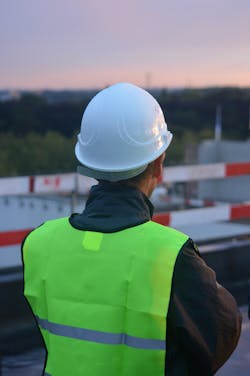VIDEO: Internet of Things Technology in Construction PPE
As Internet of Things (IoT) technology continues to increase in popularity, more devices will begin to provide immediate, real-time information. From the amount of steps you take per day, to weather and road conditions, IoT technology saves time, and improves productivity across the board.
With these advancements making their way to the forefront of the tech scene, IoT elements are being incorporated into devices within the construction industry (and several other industries that perform high-risk job tasks) across the globe.
According to an article in EHS Today, several companies are adopting sensors and connectivity features to ensure workers are safe, and adding to cost savings by actively preventing accidents. The article reports that currently, 38 percent of personal protective equipment manufacturers are embedding sensors in products that enable end-users to collect information about their use.
One Australian-based construction firm, Laing O’Rourke, for example, decided to incorporate IoT technology into their team’s protective safety helmets. The “smart hat” looks no different than a typical hard hat, but is fitted with numerous sensors used for data collection. These sensors monitor both the temperature and heart rate of the wearer, along with the external temperature and humidity, according to an article in the Internet of Business.
After the information is collected, it is uploaded to cloud software and analyzed. If the wearer is at risk, the hat will emit a warning sound and vibration. The system can also report directly to site managers, warning them if a team member is in need of attention.
“Because of the climate in Australia, one of the issues we face is heatstroke,” Ryan Macnamee, the company’s CIO, told Internet of Business. “The problem with heatstroke is, by the time you feel the symptoms, you already have it, so you need to have been warned well before you are exhibiting symptoms.”
Japanese company Shimabun also offers a kit to upgrade hard hats with a module that can detect exactly where workers are, whether they may be light headed, or if they have fallen. According to UberGizmo, all workers can be monitored at once. With Shimabun’s kit, data can also be logged into the system’s cloud server, and analyzed later to better determine the exact circumstances of an accident, or to improve the safety of a specific location.
A Michigan-based startup, GuardHat Inc., is also creating an IoT hardhat that continually transmits data to a safety control center. According to an article in Network World, “the system will use WiFi or cellular connectivity to track each other’s location for safety, and worker management issues.”
GuardHat also sends alerts to a control center with the worker’s precise location after a fall or safety incident, and sense when the wearer is encountering dangerous conditions, such as carbon monoxide or other gasses, or getting too close to moving machinery.
